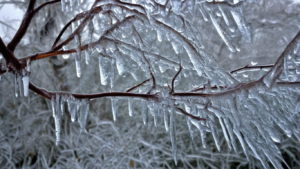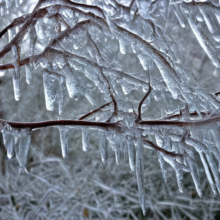How to avoid freezing during a blackout – Your Ultimate Guide
When the lights go out and the heat shuts down, the bitter chill of a blackout can be a daunting foe. But fear not, we’re here to guide you through the cold and darkness.
We’ll arm you with practical, easy-to-follow strategies to keep warm and safe, even when the power’s out. From insulation tips to alternative heat sources, we’ve got you covered.
This isn’t just about surviving a blackout, it’s about thriving, and ensuring you and your loved ones are comfortable throughout. Let’s turn the heat up on this chilling issue, and show that blackout who’s boss.
Stay tuned as we delve deeper into this topic, equipping you with the knowledge to face any blackout with confidence. Because when it comes to keeping warm, we believe in turning obstacles into opportunities.

What are blackout survival essentials?
When a blackout strikes during the cold winter months, staying warm becomes a top priority. One essential tool to avoid freezing is a high-quality thermal blanket. These blankets are designed to reflect your body heat back to you, making them incredibly effective in retaining warmth.
Another essential is a hand-crank or battery-operated heater. These devices can generate heat without the need for electricity. Remember, it’s important to ensure any heating device is safe to use indoors to prevent carbon monoxide poisoning.
Insulated clothing also plays a crucial role in preventing hypothermia. Layering clothes can trap air between the layers, creating an insulating effect.
- Thermal socks
- Insulated gloves
- Warm headwear
All these items are essential in keeping your extremities warm, as they are the first to feel the effects of the cold.
Finally, having a stockpile of non-perishable food and water is crucial. Your body burns more calories to stay warm, so having a good supply of food can help maintain your body temperature.
Remember, preparation is key. By ensuring you have these blackout survival essentials on hand, you can significantly increase your chances of staying warm and safe during a blackout.
How to insulate your home?
Insulating your home is an effective way to combat freezing temperatures during a blackout. It begins with installing thermal insulation in your walls, attics, and floors. This material reduces heat transfer, helping to maintain a comfortable temperature inside your home.
Next, consider upgrading your windows to double or triple glazing. These windows have multiple layers of glass, which provide better insulation than single-pane windows. They help keep the cold air out and the warm air in.
Sealing cracks and gaps in your home’s exterior and interior can also prevent cold drafts. Use caulk or weatherstripping for this purpose.
The use of insulated doors can also help keep the warmth in and the cold out. If replacing doors isn’t feasible, consider using draft stoppers.
Insulating your pipes is another important step. This not only prevents them from freezing and bursting but also helps keep your hot water hot.
Lastly, consider using thermal curtains or insulating blinds on your windows. These window treatments can provide an extra layer of insulation, reducing heat loss through your windows.
Remember, a well-insulated home is not only beneficial during blackouts but also helps reduce energy consumption and lower your utility bills.
Can you use a generator during a blackout?
Absolutely! A generator can be a lifesaver during a blackout, especially in severe weather conditions that can lead to freezing temperatures. It provides an alternative power source, enabling you to run essential appliances such as heaters, thereby helping you avoid freezing in your home.
However, it’s crucial to use a generator safely. Here are some tips:
- Never operate a generator indoors or in enclosed spaces. This can lead to carbon monoxide poisoning.
- Ensure your generator is well-maintained and ready to use at any time.
- Use heavy-duty extension cords for outdoor use.
Investing in a generator can be a significant step towards blackout preparedness. It not only helps in maintaining a comfortable temperature but also keeps your lights on and your refrigerator running. Remember, prolonged blackouts can lead to food spoilage, another problem a generator can prevent.
Moreover, consider insulation methods for your home, such as using thermal curtains or insulating your walls and roof. These can retain heat for longer periods, reducing the need for constant heating and thus, conserving generator fuel.
Remember, while a generator can be a great solution to avoid freezing during a blackout, it’s essential to use it safely and efficiently.
What are safe heating alternatives during a blackout?
When a blackout occurs during cold weather, it’s imperative to have a plan in place to stay warm. A popular option is to use a portable propane heater. These heaters are efficient, safe, and provide a significant amount of heat. However, they must be utilized in a well-ventilated area to prevent carbon monoxide buildup.
Another effective method is to use a wood-burning stove or fireplace. These traditional heating sources provide substantial warmth and can also be used for cooking. Ensure you have a sufficient supply of dry wood and matches to get the fire started.
Moreover, utilizing thermal blankets can help maintain body heat. These blankets are designed to reflect back 90% of your body heat, making them highly effective during blackouts.
Lastly, consider using:
- Hand warmers: These small packets produce heat for several hours and can be tucked inside your clothing for extra warmth.
- Insulated clothing: Layering up with thermal clothing, including hats, gloves, and socks, can help retain body heat.
Remember, safety is paramount during a blackout. Always follow the manufacturer’s instructions for any heating device, and never leave fires or heaters unattended. By preparing for a blackout in advance, you can ensure you stay warm and safe during a cold weather blackout.
How to store heat in a blackout?
When a blackout strikes during the winter, the temperature in your home can drop rapidly. To avoid freezing, it’s crucial to store heat effectively. One of the most efficient methods is to insulate your home. This involves sealing windows and doors with weather-stripping or plastic film, and using thermal curtains to reduce heat loss.
In addition, using alternative heat sources can make a significant difference. Portable propane heaters, wood-burning stoves, and kerosene heaters are all viable options. However, it’s important to ensure these are used safely to avoid carbon monoxide poisoning.
Heat retention can also be achieved by using thermal blankets and wearing multiple layers of clothing. Consuming hot food and drinks can help maintain your internal body temperature.
- Insulate your home
- Use alternative heat sources
- Retain heat with blankets and clothing
- Consume hot food and drinks
Remember, during a blackout, it’s not just about generating heat, but also about preventing heat loss. By following these steps, you can avoid freezing and stay comfortable until power is restored.
What is the importance of layering clothes?
Layering clothes is a fundamental survival strategy during a blackout, especially in cold weather. This technique traps body heat, reducing the risk of hypothermia. The concept is simple: wear multiple layers of clothing instead of one heavy garment. The air trapped between the layers acts as insulation, keeping you warm even in freezing temperatures.
The first layer, or the base layer, should be made of moisture-wicking material like wool or synthetic fabrics. This layer keeps you dry by pulling sweat away from your skin. The second, or middle layer, provides the main insulation and retains body heat to protect you from the cold. This layer can be composed of sweaters or vests made from fleece or wool. The final, or outer layer, shields you from wind and rain. This should be a lightweight, waterproof, and windproof jacket.
- Base layer: moisture-wicking material
- Middle layer: insulating material
- Outer layer: protective material
Layering clothes is an effective, practical solution to stay warm during a blackout. It allows for flexibility – you can add or remove layers based on your comfort and the indoor temperature. Remember, keeping warm is crucial to avoid freezing and potential health risks during a blackout. Layer up and stay safe.
How to cook food during a blackout?
Cooking food during a blackout can be a daunting task, but with the right tools and knowledge, it can be done safely and efficiently. One of the most common methods is to use a portable gas stove. Ensure you have a well-ventilated area to avoid carbon monoxide poisoning.
Another method is to use a grill. Whether it’s a charcoal or gas grill, it can provide a reliable heat source for cooking during a blackout. However, remember to use it outdoors to avoid any potential fire hazards.
A wood-burning fireplace can also serve as a cooking spot. You can heat canned food directly on the embers.
In case you don’t have these options, you can resort to non-perishable food items that require no cooking. Stock up on canned goods, dry mixes, and other staples that can last a long time.
Remember, safety should be your top priority when cooking during a blackout. Always have a fire extinguisher on hand and never leave cooking food unattended.
- Use a portable gas stove
- Utilize a grill
- Cook on a wood-burning fireplace
- Resort to non-perishable food items
No matter the situation, preparedness is key. Have a plan in place and ensure you have the necessary tools to cook food safely during a blackout.
What is the role of emergency blankets?
Emergency blankets, also known as space blankets, are essential tools for survival during a blackout. Designed with a metallic surface, these blankets reflect body heat back to the user, providing a significant source of warmth. During a power outage, when heating systems fail, using an emergency blanket can help you avoid freezing and maintain a safe body temperature.
One of the primary roles of emergency blankets is to prevent hypothermia. In freezing conditions, hypothermia can set in quickly, making it crucial to retain body heat. Emergency blankets are lightweight and compact, making them easy to store in preparation for a blackout.
- Protection against wind and rain: Besides providing warmth, emergency blankets also offer protection against wind and rain, adding another layer of insulation.
Remember, during a blackout, staying warm is paramount. An emergency blanket is a practical and effective solution. Its reflective surface, ability to retain heat, and protection against external elements make it an essential item in any blackout survival kit.
Conclusion: Preparing for the Cold During a Blackout
In summary, knowing how to avoid freezing during a blackout is a vital survival skill. This post has covered a wide range of topics to help you prepare and stay warm in the event of a power outage. We’ve discussed the essentials for blackout survival, including home insulation, the use of generators, safe heating alternatives, and heat storage techniques.
The importance of layering clothes was emphasized as an effective way to retain body heat. We’ve also touched on how to cook food without electricity, and the significant role emergency blankets play in providing additional warmth.
Preparation is key to surviving a blackout in freezing conditions. By following the advice and tips provided, you’ll be better equipped to handle such a situation. Future developments in technology may provide more efficient and safer ways to heat your home during a blackout, but until then, these methods remain the most effective.
Remember, your safety and well-being are paramount. Always ensure you have a well-stocked emergency kit and a solid plan in place. Stay warm, stay safe.



